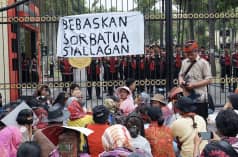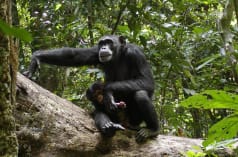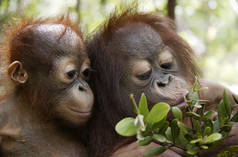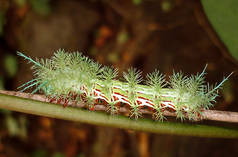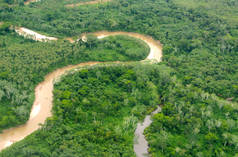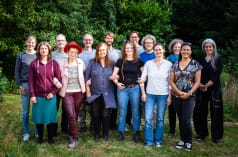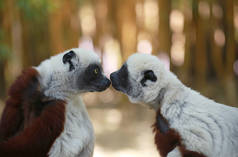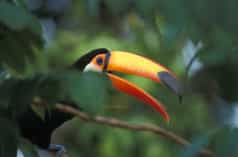Zimbabwe : Transfrontier Park and World Heritage Site under threat
http://www.sokwanele.com/articles/sokwanele/transfrontierparkandworldheritagesiteunderthreat_1august2005.html Zimbabwe : Transfrontier Park and World Heritage Site under threat Sokwanele Report: 1 August 2005 Gonarezhou Unfit for Incorporation into a Regional Transfrontier Park Gonarezhou National Park used to be an unspoiled wilderness. In the south east of Zimbabwe lies the massive Gonarezhou National Park, a previously unspoiled wilderness. The Park is flanked on its eastern boundary by the border with Mozambique and just to the south lies the mighty Kruger National Park. Before the Mugabe regime initiated the chaotic land grab in Zimbabwe to bolster its rapidly declining popularity, conservationists and wild life experts had been planning, and the governments concerned had committed themselves to, a Transfrontier Park which would straddle the borders between Mozambique, Zimbabwe and South Africa. It was to have been an ambitious project which would have created the largest wildlife sanctuary in the world, and no doubt boosted tourist earnings and employment prospects dramatically for the three countries concerned. Alas Zimbabwe has reneged on the deal, allowing the once pristine wildlife area it was to have contributed to the joint venture to be so ravaged by human invasion as to be no longer suitable as a national, let alone trans-national game park. Our reporter saw this for himself when he recently joined a group of visitors to Gonarezhou. Their observations are truly shocking. The first thing they noticed on entering what used to be a strictly controlled ecozone of outstanding natural beauty, was that all the fences had been removed. All that remained were the steel poles bedded in the hard earth. Entering the park they were then struck by the number of indigenous trees that had been felled - literally thousands - leaving bare, empty plains where mixed woodlands had once stood. So much for the natural habitat that once supported a vast range of wild and bird life, but there was worse to come. The formerly abundant grasslands had been devastated too, grossly overgrazed by cattle and goats, which now wandered freely through the area. The cause of this massive degradation of natural resources was of course the settlers who had moved into the area in search of fresh pastures and easy-to-harvest game. Indeed our reporter found abundant evidence of the hunting and slaughter of wildlife with rifles. The game wardens who at one time jealously guarded the wildlife against poachers are now instructed by their new political bosses to let things be. From various vantage points it was clear that the settlers, numbering many hundreds, had penetrated a distance of between five and 10 kilometres into Gonarezhou from what used to be the western boundary of the Park. It was in this vast swathe of land that the greatest destruction of flora and fauna had occurred. Here the only wildlife seen was a herd of about 30 elephant. In the vicinity of the renowned Chilojo Cliffs, in an area once teeming with wild life, the observers spotted only 7 bull elephants and no small game. For the rest they saw nothing but cattle and goats along the way. The roads were bare of game spoor. Further investigation confirmed that some of the settlers had ventured as far as the Pamadzi River where they had set up makeshift homes. Only as the visitors thrust farther to the east and away from the area already inhabited by the new settlers, did they begin to find signs of the once pristine vegetation that had previously covered the whole of the National Park. It is clear from the ongoing reports we have received that there is absolutely no prospect of proceeding with the plans for a Transfrontier Park in the area until law and order have been restored in Zimbabwe under an altogether new political dispensation which is serious about tourism, employment and wildlife conservation. And even then there will be a huge amount of work involved in making good the depredations of human settlement and exploitation, for which the Mugabe regime is entirely responsible. Chirundu Project Threatens World Heritage Site During the past five years the regime has destroyed Zimbabwe's once thriving tourism industry and the highly efficient commercial agricultural sector which, together with mining, were the country's largest foreign currency earners. Sokwanele has been informed of yet another critical threat to conservation in Zimbabwe: the proposed invasion of a vast tract of pristine wilderness area, part of which is a World Heritage Site, for an ill-advised 120 000ha agricultural venture. According to a communiqué released by the Zimbabwe Conservation Development Foundation (ZCDF), a structured group comprising farmers, business people, companies and other independent stakeholders has developed an agricultural concept known as the "Chirundu Project". Although this massive project has yet to be announced publicly, the launch of the first stage - which purportedly has the approval of a senior government executive - is scheduled for 1 November. The full extent of the project will invade not only the pristine Urungwe Safari Area, but a vast tract of land from Urungwe's western boundary, across Mana Pools National Park and the Sapi Safari Area to the Chewore Safari area's eastern boundary, with the Zambezi River as its northern boundary. The land measures an estimated 100km long and 10km wide, which equates to approximately 100 000ha. This region constitutes one of Africa's most outstanding wildlife spectacles and contains the last remaining natural stretch of the Middle Zambezi River. In recognition of their international importance, the Mana Pools National Park, Sapi and Chewore Safari Areas were ratified by the IUCN (World Conservation Union) as a World Heritage Site in 1984 (reference: 302). The summary prepared by the IUCN was based on the original nomination submitted by Zimbabwe and states that the area is under public ownership. It is protected by the Parks and Wildlife Act of 1975 and is managed by the Department of National Parks and Wildlife Management. It takes into account the contiguous status of Urungwe in the east and Dande in the west being proclaimed Safari Areas that afford Mana Pools National Park and adjacent areas an auxiliary field of protection. The area under threat from the proposed Chirundu agricultural project constitutes a total of 6 766 square kilometres. No environmental impact assessment has been submitted to the Department of Natural Resources, nor has it invited one, and no known key stakeholders or interested persons or groups have been consulted on this matter. Despite this, in excess of US$ 30 million worth of agricultural equipment in the form of extensive irrigation equipment, earthmoving machinery and heavy duty transport is reportedly in the final stages of being ordered for Phase 1. The contract for the construction of 600 low-cost houses in the area has apparently already been awarded. The proposed project will include the growing of four major crops. However, the area is geologically unsuitable for commercial agriculture, with low sandy soil values over much of the affected land. Furthermore, there is a strong prevalence of tropical diseases such as tripanosomosiasis (sleeping sickness), malaria and bilharzia, making the region unsuitable for human habitation and domestic livestock. The catastrophic consequences of allowing commercial agriculture in the area, which constitutes one of Africa's most outstanding wildlife spectacles, will include: * Massive and irreversible deforestation of pristine land for cultivation * Large scale, indiscriminate hacking down of trees for firewood * Pumping of huge volumes of water from the Zambezi River for irrigation * Pollution of streams, secondary rivers and the Zambezi River caused by the vast amounts of fertilisers needed to enhance yields in poor quality soils * Large scale insecticide, waste, noise and smoke pollution * Extensive sheet and gully erosion due to soil structure and composition * Threatening the seasonal occurrences of large mammals within the valley, which is of great inter and intra-species ecological value * Poaching and the barbaric snaring of wildlife - which has already decimated numbers countrywide * The destruction of a vast array of flora and fauna - the area has a unique collection of over 380 species of avifauna * Massive habitat destruction which will also impact on the magnificent birdlife * Irreversible disturbance of the ecological balance in this ecologically sensitive region * The impact on tourism, a vital source of revenue for the rebuilding of Zimbabwe, will be extremely serious. The ZCDF is requesting concerned individuals, organisations, institutions, trusts, regional authorities and international governments to write urgently to the ZCDF supporting its opposition to the proposed Chirundu Project. The Zimbabwe Conservation and Development Foundation Chief Executive Officer Johnny Rodrigues E-mail: galorand@mweb.co.zw Phone: 263 4 336710, 263 4 339065, 263 11 603213
